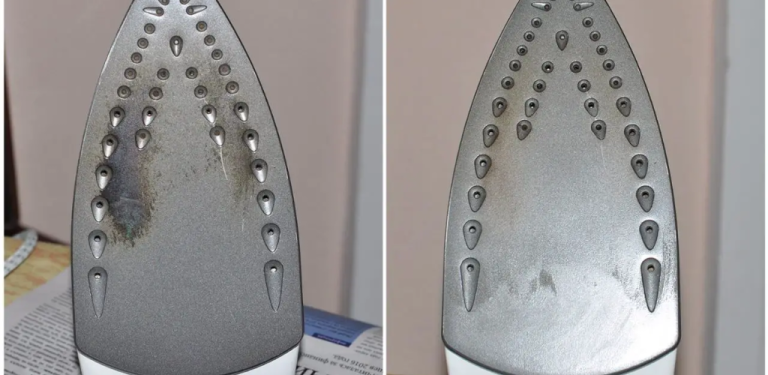Vinegar
The vinegar It is an ingredient with a strong corrosive power capable of removing limescale from surfaces.
So start by creating a solution that contains equal parts water and white vinegar.
Then pour it into the tank and after filling it, turn on the iron.
Let the plate heat up, then steam until hard white pieces no longer come out of the holes in the plate.
At this point, turn off the iron, let it cool and empty the boiler.
Together with the water and vinegar solution, you will notice that the lime residue present in the tank is also removed.
We recommend that you repeat this operation a second time , creating, however, a solution composed of only 10% vinegar.
However, if you don’t want to vaporize the vinegar and water solution because you don’t like the strong smell of vinegar, you can also pour it directly into the boiler and let it sit for a few hours.
For a more effective effect, the solution can also remain in the boiler overnight. Then empty the boiler and let it drain by shaking the iron.
If you wish, you can repeat the procedure adding only demineralized water to completely eliminate the remains of white vinegar.
Citric acid
Citric acid is a compound derived from citrus that is proposed as a more ecological alternative to vinegar, although it boasts the same effectiveness.
In fact, it has anti-limescale, descaling and detergent properties, very useful for removing limescale deposits from the iron.
Then dissolve 200 grams of citric acid in 1 liter of warm water (it dissolves better this way) and pour everything into the boiler.
Turn on the iron and let the steam escape until all the accumulated limescale is removed.
And voilà: your iron is ready to be used to give you smooth, wrinkle-free clothes!
Leaf
However, in addition to cleaning the tank, it is also important to clean the plate, as limestone settles in the small holes underneath.
For this reason, the plate requires periodic cleaning to free the holes and not compromise the correct operation of the device.
Attention! Always make sure to unplug it before starting to clean the plate, to be completely safe.
baking soda and lemon
To clean iron plate, baking soda and lemon are very effective.
In fact, combined together, these two ingredients react and form a foam with descaling power.
Then pour a tablespoon of baking soda and a tablespoon of lemon into a glass of hot water. Then mix all the ingredients until you obtain a homogeneous mixture.
At this point, dip a sponge in the mixture thus obtained and pass it over the plate.
Finally, dry with a soft cloth and… the game is done !
cotton swab
Another very effective home remedy to thoroughly clean the holes under the plate and facilitate the escape of steam is to use cotton swabs.
Then take a cotton swab soaked in white vinegar and gently run it through the holes in the plate.
Let it sit for a while and use your iron: you will notice the difference!
How to prevent limescale formation
Once we have seen together how to descale the iron, let’s see together how to prevent limescale formation .
Demineralized water
First of all, we recommend that you always use demineralized water in your iron.
Demineralized water, in fact, is deprived of its saline component and this, therefore, allows it not to form calcareous deposits.
This prevention system will ensure that your iron does not suffer damage.
conditioning water
As an alternative to demineralized water, many people use air conditioning water to iron.
In fact, this water is condensed water, without lime.
Before using this water, however, always ensure that no chemical detergents have been used in conditioners that have not yet been discarded and that there is no damage that could alter the purity of the water.
Warnings
We remind you to always follow the production instructions before trying the suggested remedies on your iron.
